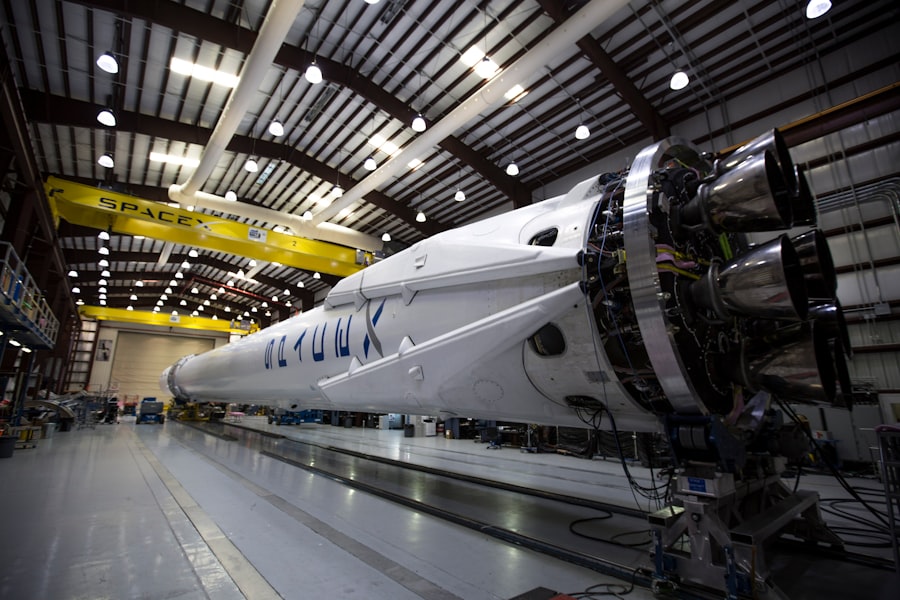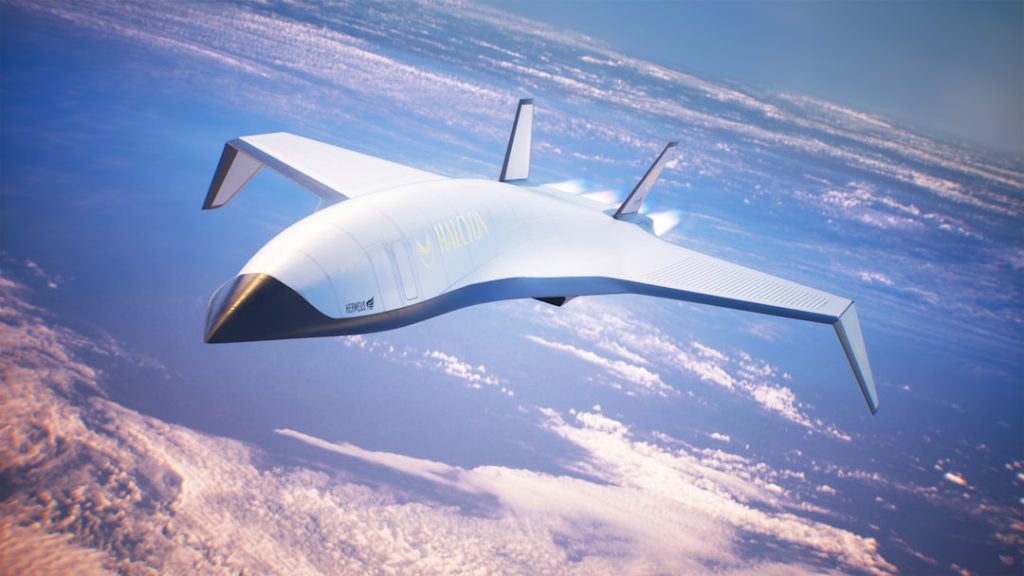The aerospace industry is undergoing a transformative phase, characterized by rapid advancements and innovative technologies that are reshaping the landscape of air travel and space exploration. As global demand for air travel continues to rise, driven by an expanding middle class and increasing globalization, the industry is compelled to adapt and evolve. This evolution is not merely a response to market pressures; it is also fueled by a growing awareness of environmental sustainability, technological advancements, and the need for enhanced safety and efficiency.
The convergence of these factors has led to the emergence of several key trends that are poised to redefine the future of aerospace. One of the most significant trends is the integration of advanced materials and manufacturing techniques, which are revolutionizing aircraft design and production. These innovations are not only enhancing performance but also reducing costs and environmental impact.
Additionally, the push for sustainable aviation practices is gaining momentum, with stakeholders across the industry recognizing the urgent need to address climate change. As we delve deeper into these trends, it becomes evident that the aerospace sector is on the brink of a new era, one that promises to be more efficient, sustainable, and technologically advanced than ever before.
Key Takeaways
- The aerospace industry is experiencing emerging trends in advanced materials, sustainable aviation, electric and autonomous aircraft, space tourism, hypersonic and supersonic flight, digital transformation, and defense applications.
- Advanced materials and manufacturing techniques are revolutionizing the aerospace industry, leading to lighter and stronger aircraft components.
- Sustainable aviation and green technology are becoming increasingly important as the industry seeks to reduce its environmental impact.
- Electric and autonomous aircraft are on the rise, with companies investing in developing innovative technologies for the future of air travel.
- Space tourism and commercial space travel are gaining momentum, with companies like SpaceX and Blue Origin leading the way in making space more accessible to the public.
Advanced Materials and Manufacturing Techniques
The aerospace industry has long been at the forefront of material science, but recent developments have taken this to new heights. Advanced materials such as carbon fiber reinforced polymers (CFRP), titanium alloys, and lightweight composites are increasingly being utilized in aircraft construction. These materials offer superior strength-to-weight ratios, which translate into improved fuel efficiency and performance.
For instance, the Boeing 787 Dreamliner extensively employs CFRP in its fuselage and wings, resulting in a significant reduction in weight compared to traditional aluminum structures. This not only enhances fuel efficiency but also reduces maintenance costs due to the material’s resistance to corrosion. In addition to advanced materials, innovative manufacturing techniques such as additive manufacturing (3D printing) are revolutionizing how components are produced.
This technology allows for the creation of complex geometries that were previously impossible or prohibitively expensive to manufacture using traditional methods. For example, GE Aviation has successfully employed 3D printing to produce fuel nozzles for its LEAP engine, resulting in a part that is 25% lighter and 5 times more durable than its conventionally manufactured counterpart. The ability to rapidly prototype and produce parts on-demand also streamlines supply chains and reduces lead times, making the manufacturing process more agile and responsive to market needs.
Sustainable Aviation and Green Technology

As concerns about climate change intensify, the aerospace industry is increasingly focusing on sustainable aviation practices. The development of green technologies is no longer optional; it has become a necessity for ensuring the long-term viability of air travel. One of the most promising avenues in this regard is the research and development of sustainable aviation fuels (SAFs).
These biofuels are derived from renewable resources such as plant materials and waste products, offering a significant reduction in greenhouse gas emissions compared to conventional jet fuels. Airlines like KLM and United Airlines have already begun incorporating SAFs into their operations, signaling a shift towards more environmentally friendly practices. Moreover, manufacturers are investing heavily in electric propulsion systems as a means to reduce reliance on fossil fuels.
Companies like Airbus and Boeing are exploring hybrid-electric aircraft designs that combine traditional engines with electric motors powered by batteries or fuel cells. The E-Fan X project by Airbus exemplifies this trend, aiming to develop a hybrid-electric aircraft capable of flying short-haul routes with significantly lower emissions. The transition to electric propulsion not only promises reduced environmental impact but also offers potential cost savings in terms of fuel expenses and maintenance.
Electric and Autonomous Aircraft
| Metrics | Electric Aircraft | Autonomous Aircraft |
|---|---|---|
| Environmental Impact | Reduced carbon emissions | Potential for optimized flight paths |
| Energy Source | Battery-powered | Electric or hybrid-electric |
| Regulatory Challenges | Challenges with certification | Regulations for autonomous flight |
| Market Adoption | Increasing interest and investment | Early stages of development |
The advent of electric aircraft represents a paradigm shift in aviation technology, with the potential to revolutionize how we think about air travel. Electric propulsion systems offer numerous advantages over traditional jet engines, including lower operating costs, reduced noise pollution, and decreased emissions. Companies like Pipistrel have already developed fully electric aircraft such as the Alpha Electro, which is designed for flight training and short-distance travel.
These aircraft utilize battery technology that has seen significant advancements in recent years, allowing for longer flight durations and improved performance. In parallel with electric propulsion, the development of autonomous aircraft is gaining traction within the industry. The concept of unmanned aerial vehicles (UAVs) has evolved from military applications to commercial uses, including cargo delivery and passenger transport.
Companies like Joby Aviation are pioneering urban air mobility solutions with their eVTOL (electric vertical takeoff and landing) aircraft designed for short-distance urban travel. These autonomous systems rely on sophisticated algorithms and artificial intelligence to navigate safely through complex airspace environments. As regulatory frameworks evolve to accommodate these innovations, we may soon witness a new era of air travel characterized by increased accessibility and efficiency.
Space Tourism and Commercial Space Travel
The dream of space tourism is rapidly becoming a reality as private companies invest heavily in commercial space travel initiatives. Pioneers like SpaceX, Blue Origin, and Virgin Galactic are leading the charge in making space accessible to civilians. SpaceX’s Crew Dragon spacecraft has successfully transported astronauts to the International Space Station (ISS), while Blue Origin’s New Shepard has completed suborbital flights with paying customers aboard.
These developments mark a significant milestone in the democratization of space travel, opening up opportunities for individuals who have long aspired to experience weightlessness and view Earth from above. The implications of commercial space travel extend beyond mere tourism; they encompass scientific research, satellite deployment, and even potential colonization efforts on other celestial bodies. As private companies continue to innovate and reduce costs associated with space travel, we can expect an influx of new players entering the market.
This burgeoning industry not only promises thrilling experiences for adventurous travelers but also holds the potential for economic growth through job creation and technological advancements that can benefit various sectors on Earth.
Hypersonic and Supersonic Flight

The quest for faster-than-sound travel has captivated engineers and aviation enthusiasts for decades. Recent advancements in hypersonic and supersonic flight technologies are reigniting interest in this area, with several companies working on developing commercial aircraft capable of reaching speeds exceeding Mach 1. Boom Supersonic’s Overture project aims to create a supersonic passenger jet that can cut transatlantic flight times in half while maintaining environmental standards through innovative design and engine technology.
Hypersonic flight—defined as speeds greater than Mach 5—presents unique challenges due to extreme temperatures and aerodynamic pressures encountered at such velocities. However, research initiatives led by organizations like DARPA (Defense Advanced Research Projects Agency) are exploring hypersonic technologies for both military applications and potential commercial use. The development of hypersonic vehicles could revolutionize global travel by significantly reducing flight times between major cities around the world.
Digital Transformation and Big Data Analytics
The aerospace industry is increasingly leveraging digital transformation strategies to enhance operational efficiency and improve decision-making processes. The integration of big data analytics into various aspects of aerospace operations allows companies to harness vast amounts of information generated from aircraft systems, maintenance records, and passenger data. By analyzing this data, airlines can optimize flight schedules, improve fuel efficiency, and enhance customer experiences.
Predictive maintenance is one area where big data analytics is making a significant impact. By utilizing sensors embedded within aircraft systems, operators can monitor performance metrics in real-time and predict potential failures before they occur. This proactive approach not only minimizes downtime but also reduces maintenance costs significantly.
Companies like Rolls-Royce have implemented digital twins—virtual replicas of physical assets—to simulate performance under various conditions, enabling more informed maintenance decisions.
Defense and Military Applications in Aerospace Industry
The defense sector remains a critical component of the aerospace industry, with ongoing investments in advanced technologies aimed at enhancing national security capabilities. Unmanned aerial vehicles (UAVs) have become integral to modern military operations, providing surveillance, reconnaissance, and combat support without risking human lives. The development of advanced drone technologies has led to increased autonomy and improved payload capacities, allowing military forces to conduct missions more efficiently.
Furthermore, advancements in stealth technology continue to shape military aircraft design. Stealth capabilities reduce an aircraft’s radar signature, making it less detectable by enemy forces. The F-35 Lightning II program exemplifies this trend; it incorporates cutting-edge stealth features alongside advanced avionics systems that enhance situational awareness for pilots.
As geopolitical tensions persist globally, the aerospace industry’s focus on defense applications will likely intensify, driving further innovation in military aviation technologies. In summary, the aerospace industry stands at a crossroads marked by emerging trends that promise to reshape its future significantly. From advanced materials and sustainable practices to electric propulsion systems and commercial space travel initiatives, these developments reflect a broader commitment to innovation and sustainability within the sector.
As we continue to explore these trends further, it becomes clear that the aerospace industry is not only adapting to current challenges but also paving the way for a more efficient and environmentally responsible future in air travel and space exploration.


